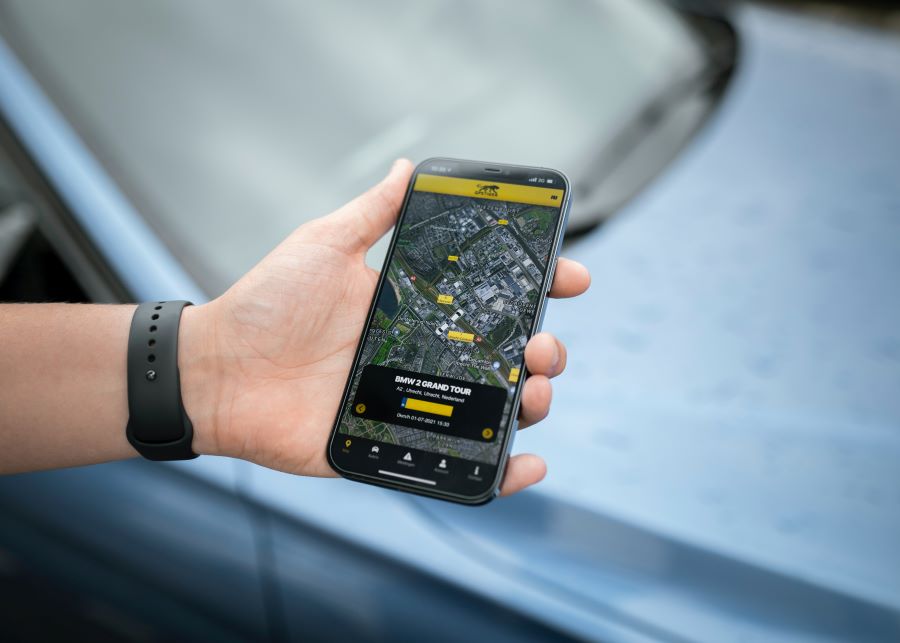
We can easily travel and locate ourselves thanks to Global Positioning System (GPS) technology, which has become an essential element of our everyday life. Nowadays, it's common to find cell phones with GPS built in, which gives consumers precise location data. The inner workings of a cell phone GPS system will be examined in this guide, providing insight into the technology and how it determines our exact location.
Basics of GPS:
GPS receivers use signals from the Global Positioning System, a network of satellites orbiting the Earth, to pinpoint their location. The space segment, the control segment (ground control stations), and the user segment make up the GPS system.
The principle of triangulation
Cell phone GPS receivers use a technique known as triangulation to pinpoint their location. Triangulation is the process of simultaneously determining the distance between the receiver and several GPS satellites. The GPS receiver can determine its distance from each satellite by measuring the time it takes for signals to reach it from the satellites.
Time synchronization and satellite signals: GPS satellites continuously send out signals that contain their exact location as well as a time stamp. At least four satellites send signals to a cell phone's GPS receiver, which utilizes the time stamp data to determine each satellite's distance. For exact computations, the receiver's internal clock needs to be precise in order to synchronize with the satellite signals.
Position calculation and trilateration
The GPS receiver employs a technique known as trilateration to obtain its exact position after determining its distance from a minimum of four satellites. In trilateration, spheres are intersected, with the receiver at the center and the satellites' distances as the radii. The location of the receiver is represented by the place where these spheres connect.
Assisted GPS (A-GPS): Cell phones frequently use Assisted GPS (A-GPS) technology to speed up the GPS locating process. A-GPS helps the GPS receiver swiftly and precisely acquire satellite signals by using extra information from cellular networks. This data includes almanac data, which gives approximate satellite positions, and satellite ephemeris, which gives information about the satellites' orbits.
things Influencing GPS Accuracy
A cell phone's GPS positioning accuracy and dependability can be impacted by a number of things. These elements include air conditions, the quantity and location of available satellites, the quality of the GPS receiver, and signal interference from structures or natural barriers. GPS signals may be weaker or blocked in urban locations with tall buildings or extensive foliage, which could result in less accurate positioning.
Improvements
Cell phones may integrate extra sensors and technology to increase GPS accuracy. GPS is combined with other satellite navigation systems, such as GLONASS or Galileo, in some phones that employ Assisted-GNSS (A-GNSS). In order to provide more precise and trustworthy positional information, particularly in urban canyons or in situations where GPS signals are weak, phones may also use sensors like accelerometers, gyroscopes, and magnetometers in addition to GPS data.
Cell Phone Applications GPS
Mobile phone In many ways, GPS technology has transformed our lives. Whether walking, driving, or taking public transit, it makes accurate navigation and turn-by-turn directions possible. Additionally, GPS is essential for location-based services like tracking fitness activities, scheduling rideshare services, and locating restaurants in the area. Furthermore, GPS is essential for emergency services because it provides precise location data for calls.
In conclusion
Mobile phone The Global Positioning System, a constellation of satellites that provide signals to GPS receivers, is the foundation of GPS technology. The mobile phone uses the concepts of triangulation and trilateration to determine its exact location by calculating the distance between the receiver and several satellites. GPS accuracy may be impacted by elements including satellite availability and signal interference. Cell phone GPS systems work better when Assisted GPS (A-GPS) is used in conjunction with other technologies and sensors.

 Admin
Admin
Leave A Reply
Your email address will not be published. Required fields are marked *